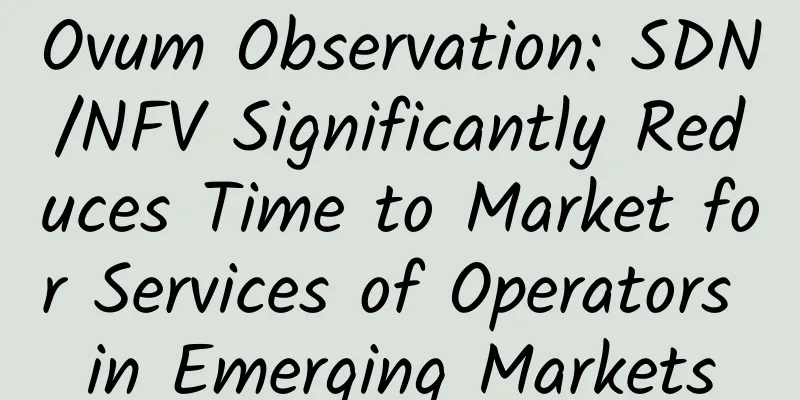Exclusive reveal! How 5G can help secure large-scale events

|
The wonderful opening ceremony of the 2022 Beijing Winter Olympics was watched by the whole world without any time difference. Behind this, 5G network support and guarantee are of utmost importance. In fact, 5G plays a very important role in various large-scale events. Do you want to know how 5G network "shows its magic" in major occasions? Communication World invites experts to reveal the 5G wireless communication guarantee solution for large-scale events. 5G networks can support typical services such as large bandwidth, low latency, high reliability, and massive machine-type communications. In the early stages of 5G development, it is expected that the proportion of video traffic will be relatively high. With the development of high-definition video, mainstream short video services, and universal live broadcasting, the indoor coverage capability of 4G networks can no longer meet the requirements of indoor services with an uplink rate of more than 100Mbit/s and a latency of less than 20ms. At large-scale events, the user density is extremely high, and the demand for 5G video services is higher than in other scenarios. Therefore, the requirements for wireless network planning, design, and optimization work are also increased accordingly. Operators need to focus on ensuring high quality and high performance of the network and ensure service carrying capacity to meet user service needs. Analysis of the communication guarantee process for large-scale eventsLarge-scale events usually reflect the comprehensive strength of a country. Their wireless network communication support work generally needs to integrate various emerging 5G business applications. It is a system engineering with high technical difficulty and high solution complexity. Operators need to ensure network coverage, capacity and quality, and formulate emergency adjustment plans on this basis. Every link in the whole process needs to be detailed and implemented. The wireless communication guarantee process for large-scale events is shown in Figure 1. Before the event guarantee, it is necessary to first conduct scientific and reasonable business forecasts. On the premise of clarifying the coverage area, a business model is formulated through user behavior analysis and user number prediction to complete business capacity planning. Secondly, it is necessary to evaluate network resources, network security, etc., and formulate a wireless communication guarantee construction plan and optimization method. Finally, the business of large-scale events is highly sudden, so it is essential to formulate emergency plans for possible risks in the network in order to be activated in emergency situations. During the event, wireless network security needs to be maintained, and network maintenance personnel need to monitor the network status in real time and investigate and handle various emergency incidents. After the event is over, it is generally necessary to restore the temporarily modified and adjusted network parameters so that the wireless network can return to normal operation. Figure 1 Wireless communication support process for large-scale events 5G service requirements for large-scale events5G network applications mainly include cloud VR/AR, HD live broadcast, video surveillance, telemedicine, remote control, cloud games, etc., while indoor services such as HD live broadcast, VR/AR, machine vision, and remote consultation have high requirements for network speed. For specific service indicators, please refer to Table 1. For large-scale events, typical 5G service applications include 4K/8K HD live broadcast, VR live broadcast, security protection, etc. Table 1 Requirements for typical 5G services 4K/8K high-definition live broadcast: 5G live broadcast can transmit high-definition images in real time, achieving 360-degree panoramic high-definition and 10x zoom effects. VR live broadcast: Use 5GVR technology to broadcast celebrity concerts, large-scale events, etc. in real time, giving users an immersive experience. Security protection: Security work for large-scale events is very important. 5G networks can provide security video surveillance methods with smarter operation and clearer image recognition. AR glasses can improve security efficiency through face recognition technology, smart robots can conduct ground security inspections, and CPE backhaul equipment uses 5G networks to transmit 4K high-definition inspection images back to complete routine security inspections. Network security solutions for large-scale eventsLarge-scale events are usually held in venues, which is a typical scenario with high indoor coverage and business demand. Large venues are usually large in area, with large spans of single buildings and mainly steel frame structures, which limits the antenna installation points, leaves the scene open and unobstructed, and makes cross-area coverage and interference control more difficult. The business characteristics are: strong business bursts, data business demand far exceeds voice business, upload business demand is large, and the proportion of uplink traffic in total traffic can reach more than 40%. (1) Spectrum PlanningFor venues hosting large-scale events, it is necessary to coordinately consider all indoor and outdoor frequency bands involved in 2G, 4G, and 5G wireless networks. When formulating frequency planning strategies, indoor and outdoor heterogeneous frequency networking or staggered frequency networking should be used as much as possible. Even if the same frequency networking is used, various means should be taken to control and reduce interference. For indoor venues, 2G, 4G, and 5G frequency points should be reasonably planned, and cells should be divided according to business needs. The convenience of cell splitting during subsequent capacity expansion should also be considered as much as possible. In the early stages of 5G construction, the capacity is generally not high, and two frequency bands are generally deployed indoors. As user demand continues to increase, new 5G frequencies need to be superimposed in local hot spots to absorb traffic. (2) Service carrying and capacity planningIn the communication guarantee of large-scale events, the overall investment in wireless network construction is relatively large. In order to reduce costs and increase efficiency, it is necessary to reasonably use existing network resources, coordinate the planning of business carrying methods, and ensure the user's business service experience. Among them, 5G networks mainly carry new services such as high-definition video, AR/VR, etc. that have high bandwidth and latency requirements; other applications that can get a satisfactory experience in 4G networks are still carried by 4G networks. For the capacity planning of large venues, the planning should be based on the maximum capacity. The 2G, 4G, and 5G network hardware should be deployed at one time, and the software should be flexibly configured according to the actual needs of the venue to host events. This can not only ensure the network coverage, capacity, and quality, but also improve resource utilization. 5G capacity planning needs to be combined with factors such as 4G network load and 5G business development forecast. When estimating capacity demand, key considerations should be given to indicators such as user number forecast, market share, terminal penetration rate, and business guarantee rate. For details, please refer to Table 2. Table 2 5G capacity demand calculation reference Through the capacity estimation method, reasonable cell planning is carried out. With the continuous growth of business, cell splitting, adding carriers and other means are adopted to ensure network capacity. (3) Equipment selectionThe indoor environment of large venues is mainly LOS path, with good coverage, but high capacity requirements and extremely serious interference. You can choose small micro base stations, new indoor distribution, shaped antennas and other equipment and devices to increase network capacity and reduce interference. 5G indoor coverage equipment can give priority to using external antenna type distributed pico base stations, using optical-electric composite cables to support remote units pRRU with a maximum distance of 200 meters. Due to the high capacity requirements, 4T4R distributed pico base station equipment should generally be selected, which can provide good coverage and higher capacity compared to traditional indoor distribution systems, and is also convenient for flexible capacity expansion. The shaped antenna has a high sidelobe suppression ratio and a small roll-off angle, and can accurately control the antenna coverage range. It is recommended that large venues give priority to shaped antennas in antenna selection to control interference and effectively eliminate overlapping coverage of adjacent reused cellular areas. (4) Networking solutionFor indoor coverage base stations in venues with high traffic density, if distributed pico base stations are selected, multi-frequency and multi-mode devices should be used as the main equipment, while meeting the multi-standard requirements of 2G, 4G, and 5G networks. According to the different performance and business requirements of 4G and 5G, you can also choose to deploy a set of RHUB relay units and pRRU remote units for 4G and 5G respectively, that is, 4G and 5G use different cell topologies. The advantages of this method are: the 4G network capacity requirement is higher and the cell split density is higher, while the capacity requirement is not large in the initial stage of 5G construction, and the 4G and 5G networks can be relatively independently optimized for performance. In business-intensive areas of large venues, the installation height and position of the RF terminal need to be reasonably designed. External shaped antennas are required in the stands where interference is severe. When the floor height is greater than 8 meters, distributed pico base stations are used to connect external four-channel plate antennas to enhance coverage. (5) High Capacity Guarantee SolutionThe business demand for large-scale events is highly sudden and has a tidal effect. There are many services such as live broadcasting, rebroadcasting, AR/VR immersive experience, etc. The uplink business demand is very strong and the interference is serious. It is necessary to focus on capacity guarantee solutions, and the coordinated application of functions such as C-RAN, ultra-high frequency reuse, indoor and outdoor collaborative frequency planning, and carrier pools can be considered comprehensively. Among them, the use of C-RAN networking for large-scale events has many advantages. The use of C-RAN networking with centralized indoor and outdoor BBUs can alleviate the co-frequency interference between indoor and outdoor to a certain extent. At the same time, the dynamic scheduling between stations and carrier resource sharing functions can also gain benefits with the help of C-RAN networking, saving carrier resources and improving investment utilization. The C-RAN centralized machine room provides the best deployment location for MEC/UPF sinking. The real-time live broadcast, high computing, and low latency requirements of large-scale events are easier to achieve MEC edge cloud deployment with the help of C-RAN. In addition, it is conducive to the introduction of collaborative technology CoMP to improve the cell edge rate. (6) Emergency support planLarge-scale events are extremely important and influential, so it is imperative to ensure the normal operation of the network and implement emergency plans for emergencies to ensure smooth business operations. Disaster recovery backup and equipment backup: Enable the equipment disaster recovery backup plan and perform redundant coverage design. Generally, multi-carrier collaborative coverage should be considered. Real-time monitoring: monitor key indicators such as the number of users and utilization rate, set early warning thresholds in advance, and carry out emergency load processing once the thresholds are triggered. Problem location: Prepare relevant parameter plans in advance to quickly locate temporary faults, high traffic, high interference and other problems. Quick adjustment and implementation: Prepare relevant network parameter scripts that may be involved in advance, and open a green channel to ensure priority execution. Once a network emergency occurs, the above emergency response plan can be used to take multiple measures to maximize the protection of user business needs. ConclusionAlthough the venues of large-scale events are limited and the number of users is relatively fixed, multiple 5G business scenarios exist at the same time, and traffic hotspots are fluctuating, which places more sophisticated and stringent requirements on network planning. Large-scale events are a concentrated reflection of the high business of 5G indoor coverage scenarios. Wireless network security solutions need to be considered in many aspects, such as business forecasting, frequency planning, capacity planning, equipment selection, networking solutions, and emergency plans, so as to achieve high network capacity and high reliability and ensure a good business experience for users. |
>>: Flutter hybrid project highway Pigeon
Recommend
Let's talk about Ocelot gateway using IdentityServer4 authentication
[[387801]] This article is reprinted from the WeC...
2017 F5 makes applications fly!
[51CTO.com original article] In 2017, what will y...
The official version of PCI-E 4.0 specification is here! Bandwidth doubled again
At the Hot Chips conference, PCI-SIG said it woul...
ZJI: Hong Kong VDS Superset Series 20% off 450 yuan/month, Platinum 8352Y/16G memory/240G SSD/10M CN2+BGP
ZJI is the original well-known WordPress host Wei...
Meet challenges and continue to innovate: Cisco Meraki opens a new hybrid office model
In the post-epidemic era, hybrid office has becom...
SmartHost: AMD Ryzen series 35% off, starting at $2.57/month, Los Angeles/New Jersey/Las Vegas data centers
SmartHost has posted a message on its website say...
The three major operators work together to accelerate the integrated development of "5G + Industrial Internet"
In recent years, the industrial Internet has grow...
Will 5G be the next disruptive technology?
The telecommunications industry likes to use the ...
A simple introduction to the consensus algorithm Raft
[[417323]] This article is reprinted from the WeC...
China Unicom expects the number of 5G base stations to reach 700,000 by the end of this year
China Unicom recently released its financial resu...
Huawei IoT Cloud Services Accelerates Industry Innovation and Promotes Large-Scale Commercial Use
At the 2017 Huawei Connect Conference held from S...
Exploring cross-industry collaboration between 5G and edge computing
The combination of 5G networks and edge computing...
The so-called ICMP is nothing more than a general and soldiers
[[396354]] This article is reprinted from the WeC...
5G Thinking and Development: 5G development is just in time
Mobile communication technology advances every te...
CCS Insight: 5G connections to jump to 3.2 billion by the end of 2025
The GSMA's in-house The Mobile Economy Report...









